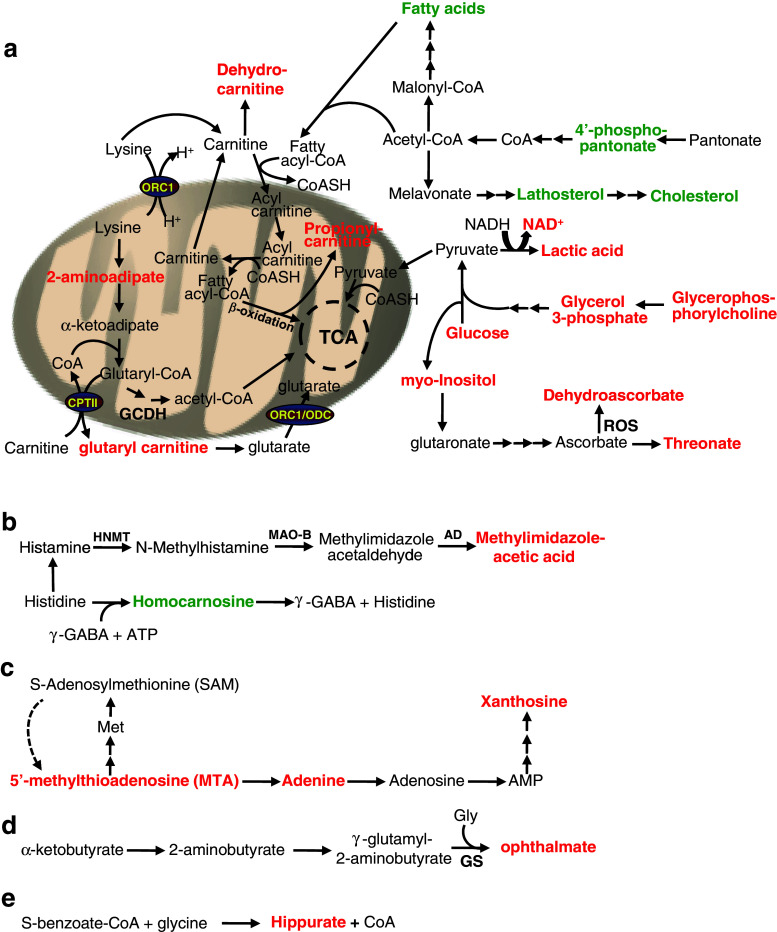Fig. 9.
Model of metabolic deregulation in the brain by RanBP2 insufficiency upon MPTP insult. Alterations of brain metabolites by RanBP2 insufficiency upon acute MPTP exposure were subdivided into five major groups (a–e). Metabolites of group a participate in depicted multistep and interdependent metabolic pathways regulating bioenergetics in the cytosol or mitochondria related to lipid and glucose metabolism and cofactors thereof. These metabolites can be further divided into three subsets: lipid metabolites or precursors and cofactors thereof, acylcarnitine conjugates and metabolites of lysine catabolism, bioenergetic metabolites/substrates, and cofactors thereof (e.g., glycerophosphorylcholine, glucose, lactate, NAD+) that likely promote reduced anaplerosis of the Krebs cycle. Metabolites of group b reflect changes in histidine catabolic pathways, whereas those of group c represent variations in the methionine and adenine salvage pathways. Metabolites of groups d and e represent changes in conjugation reactions with glycine, reflecting variations of redox pathways (group d) and detoxification reactions (group e). See text for further details. Metabolites in red and green are, respectively, up-regulated and down-regulated; single and multiple arrows represent single and multi-step pathways. MAO-B monoamine oxidase, type B ORC1 ornithine carrier, CPTII carnitine palmitoyltransferase II, ODC oxodicarboxylate carrier, OGC oxoglutarate carrier

